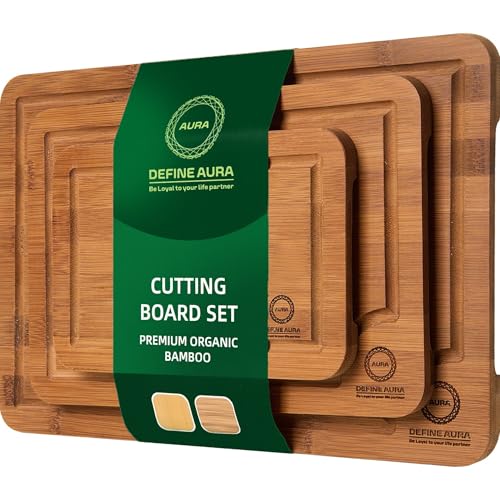We all understand how incredibly durable bamboo is. That’s why I wanted my cutting board to be bamboo. Not just because it’s durable, but since I’m also an eco-conscious individual, I chose particularly a bamboo cutting board. As I said at the beginning of the article, because I believed in their durability, I used to think about bamboo cutting boards as indestructible.
I’d simply wash them with what was on hand, rinse under boiling water, and done. And it turns out, that’s how you ruin a bamboo board. If you’ve got one or several and aren’t completely sure how to clean bamboo cutting boards without slowly destroying them, this post is for you.
What I Learned the Hard Way: Catastrophic Experience
First of all, the most important piece of information to realize is that bamboo does not work like plastic, nor even regular wood. It’s sort of like a fibrous compressed material, and it’s not a good idea to soak bamboo at all. One night, after using my bamboo cutting board for cooking, I had soaked it in water overnight in an attempt to sanitize it. I thought the grime would be dissolved this way. I knew the following day that what I had done was wrong. My cutting board made of bamboo looked like a potato chip. Wavy. Inusable. Catastrophic.
What You Should Do: Avoid Similar Experiences
My first advice is to wash it in a rush. Wash it using the least amount of water and never, ever leave it wet.
- Gentle Washing: It is a good idea to use a soft sponge (not one of those old green monsters) and mild dish soap.
- Water Temperature: Take care to notice that the water is lukewarm, not scalding. Lukewarm water does the trick.
- Clean Both Sides: I clean both sides quickly, even if I’m just cleaning one. This ensures it dries out evenly and doesn’t buckle.
Here is something that might sound strange but is real advice: If you only wash one side and it dries unevenly, then it can curl up around the edges. It’s like it’s trying to do yoga or something.
And don’t be tempted by the dishwasher, either. I know it is irresistible to all of us. It conserves effort and energy. But in good faith, the heat and steam are really not suitable for bamboo. It’s like a nightmare for bamboo. You’ll remove it, and it will crack, split, or even become unglued. That will result in not just money loss but also a lowering of your spirit.
What to Do After Washing: Upright Drying
Let me show you what I do; if it works for you, you can do it as well.
- Upright Drying: I put it upright in the dish rack so air hits both sides. Drying flat catches moisture underneath again not ideal.
- Moisturize on a Regular Basis: And, oh, every month or so (okay, whenever I think about it), I apply a teensy bit of food-grade mineral oil or coconut oil to the surface. Thin layer only, wipe off any excess, and it’s like new again and never dry.
Seriously, after a while, it’s ridiculously easy. Just wash your favorite wooden spoon quick, soft, and no soaking.
Anyway, if your bamboo cutting board could talk, it might only beg of you not to microwave or drown it.












[…] Towels Really Worth It? I Researched the Topic for You Sustainable Kitchen Tools & Cleaning TipsHow to Wash Bamboo Cutting Boards (Without Ruining Them) Sustainable Kitchen Tools & Cleaning TipsHow to Sanitize Bamboo Cutting Boards Safely at […]
[…] most individuals would concur with me. You’ve probably thought about how hygienic your cutting board needs to be, especially since you chop food upon it every […]
[…] related article: How to Wash Bamboo Cutting Boards (Without Ruining Them) […]